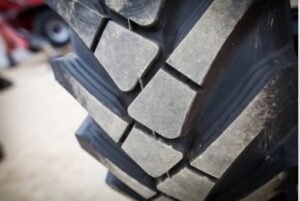Identifying the Flat Tyre

Recognizing a flat tyre on your motorcycle is crucial for ensuring your safety and maintaining optimal performance. The first step is to be aware of the common signs that may indicate a flat tyre. One of the most noticeable symptoms is difficulty in handling; you might experience a dragging sensation or an increased effort required to steer the motorcycle. Unusual vibrations, particularly in the handlebars, can also be a tell-tale sign, as can a noticeable wobble while riding, which suggests instability.
A thorough visual inspection is essential to confirm the presence of a flat tyre. Start by examining the tyre for any visible punctures or embedded objects such as nails, glass, or sharp debris. Pay close attention to the valve stem area, looking for leaks or any damage that might be causing a loss of air. Additionally, it is important to monitor the tyre pressure regularly. Using a tyre pressure gauge, check the pressure levels against the manufacturer’s recommended specifications. A significant drop in pressure is a clear indicator of a flat tyre.
Beyond these checks, maintaining a routine for tyre pressure monitoring can help in early detection of a flat tyre. This practice not only ensures safety but also prolongs the life of the tyre. Investing in a reliable tyre pressure gauge and learning to use it correctly is a worthwhile endeavor for any motorcycle owner.
In the unfortunate event that you identify a flat tyre while riding, it is imperative to prioritize safety. Gradually reduce your speed and avoid sudden braking or sharp turns. Find a safe location to pull over and assess the situation. If you are on a busy road, use hazard lights to alert other drivers. Wearing high-visibility gear can also enhance your safety during such an emergency stop. By following these steps, you can effectively manage and resolve the issue of a flat tyre on your motorcycle.
Fixing the Flat Tyre
Fixing a flat tyre on your motorcycle is a task that requires some preparation and the right tools. Before starting, ensure you have a tyre repair kit, a jack, tyre levers, and an air pump. These are essential for a smooth and effective repair process.
First, safely lift your motorcycle using the jack. Make sure the bike is balanced and stable to prevent any accidents. Once the motorcycle is securely lifted, proceed to remove the wheel. This may involve loosening the axle nuts and any other fastenings that hold the wheel in place. Refer to your motorcycle’s manual if necessary.
Next, locate the puncture. This can often be done visually or by feeling for the leak. If the puncture is not immediately apparent, consider using soapy water; bubbles will form at the puncture site when air escapes.
For tubeless tyres, a plug kit is often the best solution. Follow the instructions in your tyre repair kit to insert the plug into the puncture. This usually involves cleaning the puncture site, applying a rubber cement, and inserting the plug. For tubed tyres, you will need to remove the inner tube from the tyre. Once removed, either patch the tube using a patch kit or replace it entirely if the damage is extensive.
After the puncture is repaired, reassemble the tyre and wheel. Ensure the tyre is correctly seated on the rim. Use the air pump to reinflate the tyre to the recommended pressure. It is crucial to check for any leaks after inflation to confirm that the repair was successful.
Finally, reattach the wheel to the motorcycle, making sure all fastenings are secure. Perform a final check to ensure everything is in place and the tyre is properly inflated.
Preventative maintenance is key to minimizing future flat tyres. Regularly inspect your tyres for signs of wear and tear, and ensure they are always inflated to the recommended pressure. This not only extends the life of your tyres but also enhances your overall safety on the road.

